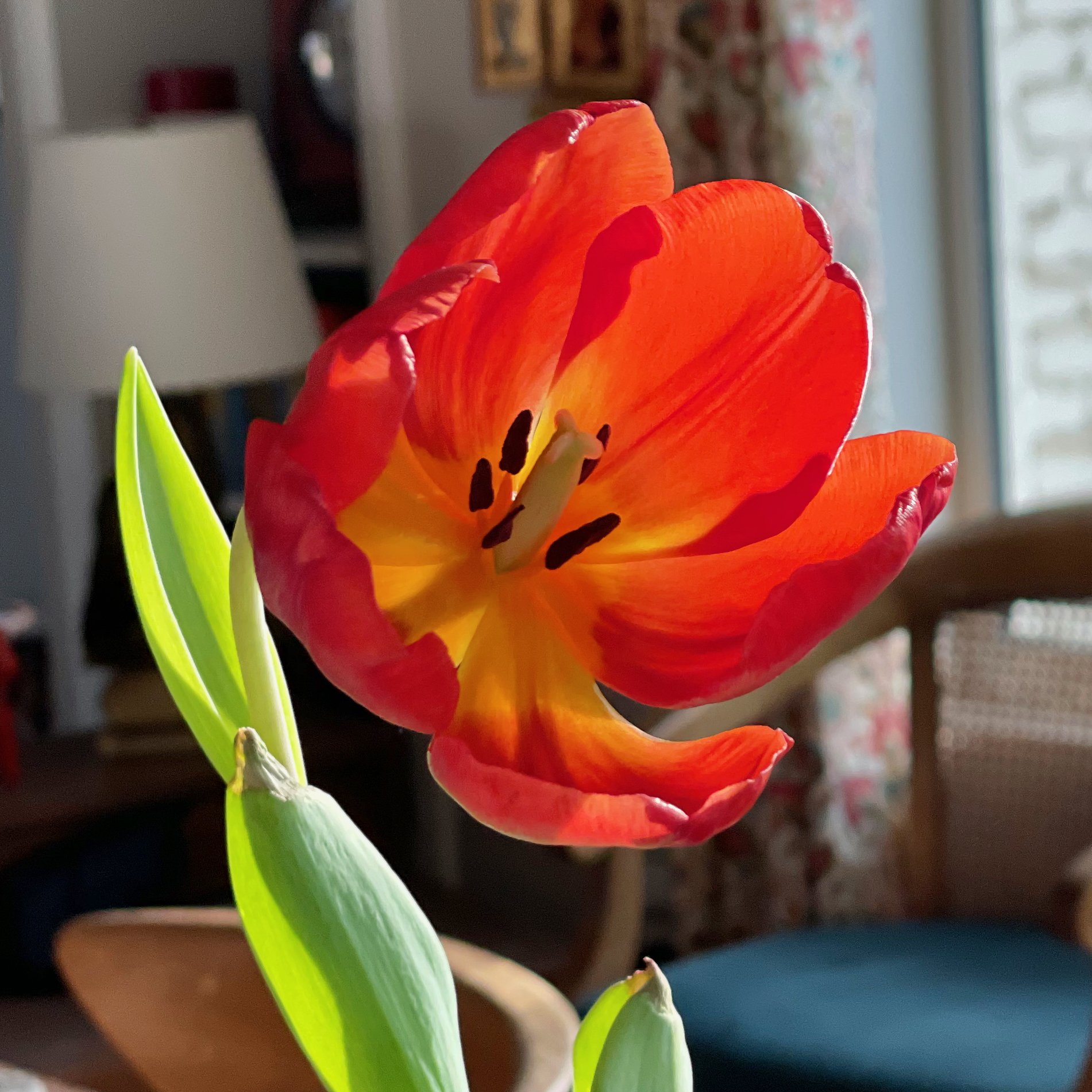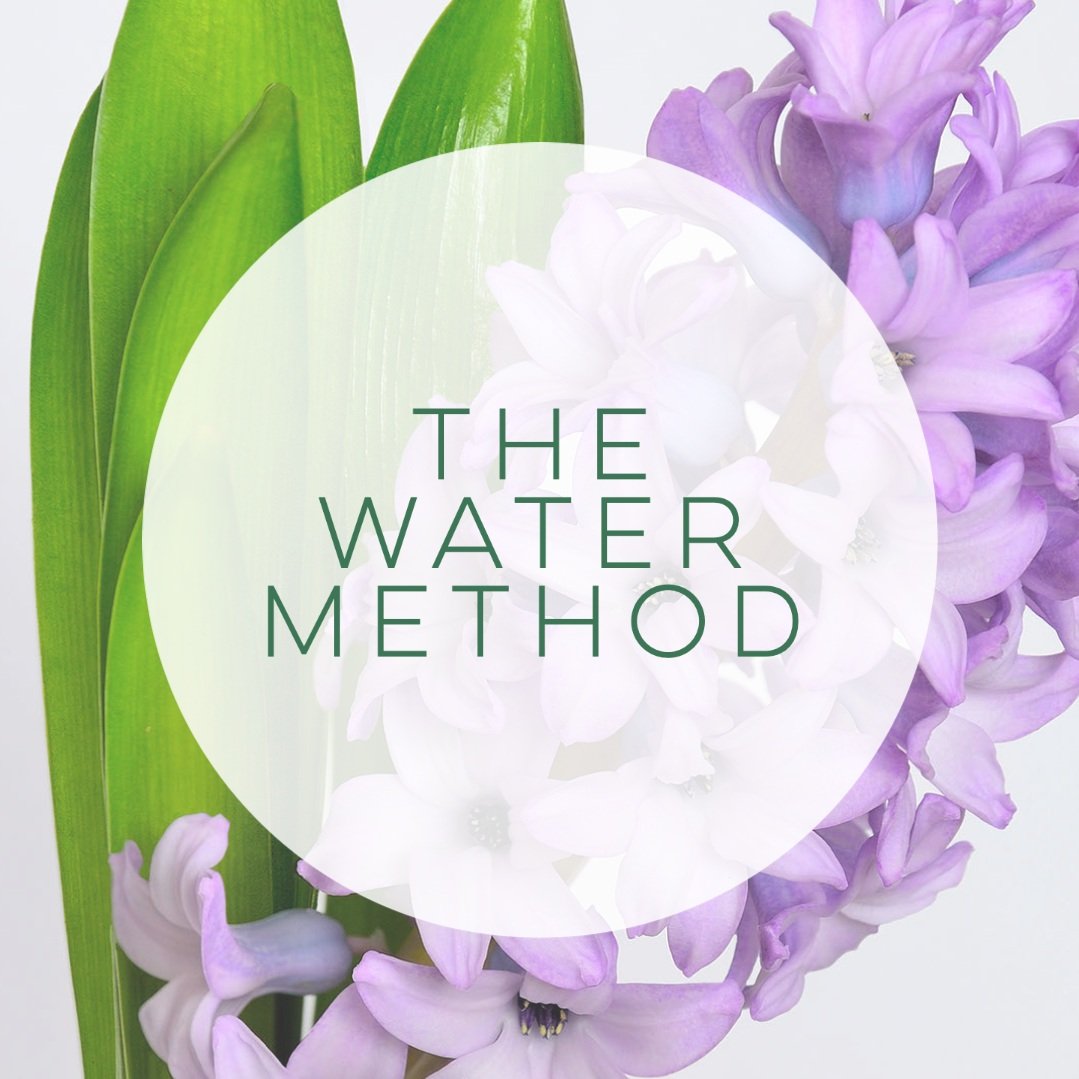Three Ways to Force Spring Bulbs
How to Foce Bulbs Indoors & Add spring cheer
Forcing spring bulbs is a really simple process, and the results are so beautiful — bringing color and cheer inside long before flowers begin to emerge outside! As I write this there is a thick blanket of snow on the ground outside my window and a cloudy, chilly sky, but I have some containers of bulbs just starting to grow, and I know I’ll have beautiful blooms in just a few weeks which makes me so happy!
What is “forcing bulbs” anyway?
Forcing is just a horticultural term for “tricking bulbs into thinking it is spring and blooming early.” Honestly, that’s all you are doing. When you are forcing bulbs, you do treat them a little differently — but it all about the deception. With the right conditions, you can have daffodils while the snow flies and tulips when it is below zero outside. You just have to create the right conditions for them to bloom. Forcing bulbs is part science and part art. It can be imprecise and hard to time them just right (for Valentine’s Day, for example), but the end results bring smiles no matter when the blooms actually come.
How do you force bulbs?
There are three primary methods for forcing bulbs depending on what kind of bulb you are forcing. Hyacinths will force with just some water, for example, but tulips won’t. The soil method will work for almost any kind of bulb, but the gravel and water methods only work for some bulbs.
What kind of bulbs can you force?
So many! But there’s a caveat: with most bulbs, you need to either purchase pre-chilled bulbs or chill them yourself. The exception is Amaryllis which does not require chilling. For this tutorial, I’m only talking about pre-chilled bulbs. Generally, these are bulbs that the sellers didn’t sell in the fall, and they have been stored in cold conditions for an adequate dormant time period.
My favorite bulbs to force include daffodils (Narcissus) and hyacinths — super easy! And tulips, too. But you can also force Crocus, Iris reticulata, Lily of the Valley, and Crocus.
A note: I generally recommend forcing only one type of bulb in each pot. Different bulbs have different blooming times, and you might be disappointed when only half of your container is glorious at one time. But you also might get lucky — depending on the varieties. It’s worth experimenting if you’re not fussy. And keep notes on what works!
Why do bulbs need to be chilled?
With the exception of Amaryllis and other tropical bulbs, most plants that grow from bulbs require a dormancy period before they can grow and bloom again. Think about a daffodil (Narcissus) — it grows at a tremendous rate in early spring, blooms, and then it stores up energy in the bulb again over a period of weeks or months before it’s foliage dies back and it rests until the following spring. The bulb is actually a bank of energy — stored as carbohydrates — for the next growing season.
Most of those bulbs not only require a period of inactivity, but also a period of cold which helps trigger growth in the spring. When a daffodil is planted out in the garden, that chilling happens in the ground. That’s why people who grow daffodils in warmer areas have to dig them up every year or plant new ones. If it doesn’t get cold enough, the bulb won’t bloom the next year. So if my mother in Texas wants daffodils, she has to buy pre-chilled bulbs each year, or store her bulbs in a chiller for 15-17 weeks to simulate winter.
If you are going to chill bulbs yourself, refer to this great article about forcing which includes chilling times. I don’t have a good place to keep bulbs, so I buy pre-chilled bulbs for forcing.
What kind of container should I use to force bulbs?
That depends on the method you’ll be using. But you don’t have to use anything fancy. No matter which method you use, your container also doesn’t have to be very deep. If you are using the soil method, you’ll want something 6-8” deep. But for the other methods of forcing, there are a range of containers which will work. The traditional pot for forced bulbs is called a bulb pan. They are usually wide and shallow — perfect for packing in a lot of bulbs together. But I have used glass vases, bowls, and other pots, too. Hyacinth bulbs have traditionally been forced in specially-shaped glass vases. They are beautiful, but there are lots of other vessels you can use, too.
What do I do with the bulbs when they are done blooming?
You certainly can plant them in your garden. However, you’ll have mixed results. Generally, tulips won’t reliably bloom again. Some will, but the flowers won’t be as big or as striking as their first bloom. If you have an area where you don’t need a focal point, but a pop of color each spring would be nice, put tulip bulbs there and see what happens. Daffodils and hyacinths won’t bloom again the next year, but they may in subsequent years, so tuck them in the earth when they are done blooming and see what happens.
If you are going to plant them out, wait until they are done blooming. If you use the soil method, wait until the foliage has yellowed and is dying back. Then cut the foliage off and plant the bulb into the ground.
Otherwise compost your bulbs and purchase new ones next year.
What else should I know?
Keep a record of what kinds you plant, what methods you use, and which are most successful. Forcing bulbs can be such fun, and building on that success year to year increases your joy in the process, too! I use Garden Notes for tracking all of my gardening — including the bulbs that I force.
Seriously, this is gardening at its simplest. So let’s get started!













